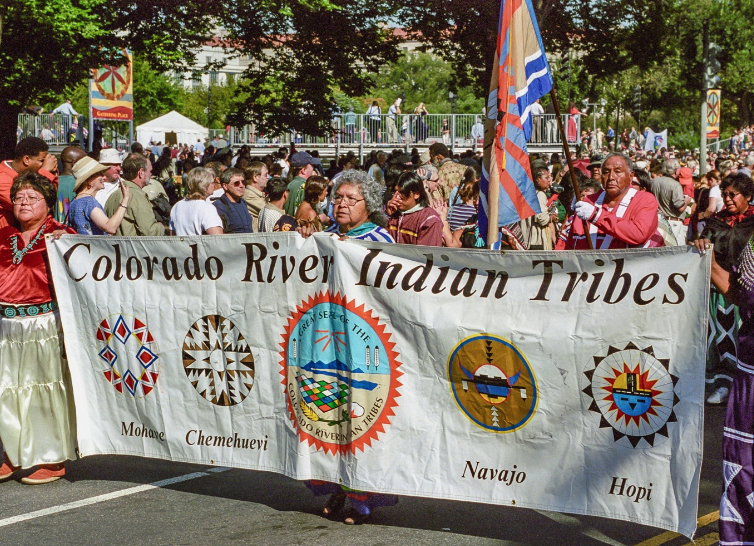One out of sixteen are Indigenous people. Roughly 476 million Indigenous Peoples live in 90 countries in more than 5,000 distinct groups, making up 6 percent of the global population and accounting for a majority of the known 7,000 languages.
All nations should be represented at the UN
The vast majority of Indigenous Peoples have no legal protection and no mechanisms for participation in outside decision-making regarding the lands they inhabit. Their status and safety are at the whims of the UN-recognized nations they find themselves within. The “First Nations” people of Canada do not have a seat at the UN, despite being many nations! From the Acoma pueblo to the Zuni, none of the original inhabitants here on Turtle Island have a permanent seat among the other nations in the UN. It is the same throughout the world. Distinct peoples such as the Taino in the Caribbean, Sami in Sweden, Ainu of Japan, and Nenets of Siberia have no UN membership. This shows a glaring shortcoming of our “international” system.
Part-time UN representation is not the same as membership
Although none have permanent representation within the 193 member-states of the United Nations, there are mechanisms supporting the participation of Indigenous representatives (such as the Voluntary Fund, Permanent Forum and Special Rapporteur). However, sporadic participation at UN forums does not carry the influence that full UN membership would.
The UN Declaration on the Rights of Indigenous Peoples (UNDRIP)
In an effort to improve the survival, dignity and wellbeing of Indigenous Peoples, in 2007 the UN General Assembly (GA) passed a resolution affirming rights of Indigenous Peoples. The UN Declaration on the Rights of Indigenous Peoples* addresses the key principles of self-determination, participation in decision-making, respect for and protection of culture, and equality and non-discrimination. It is only a framework for minimal rights, with no enforcement capability. The legally non binding resolution is referenced as:
United Nations Declaration on the Rights of Indigenous Peoples, GA Res 61/295, UN Doc A/RES/61/295 (2 October 2007, adopted 13 September 2007).
No enforcement mechanisms for the UNDRIP
This recognition of Indigenous rights has no legally binding implications, and falls short of actually providing for enforcement of these “feel good” measures. Still, it’s a good start in that it allows for representatives of Indigenous nations to have some say in UN proceedings. But, practically, it does nothing to halt the exploitation of Native people such as the Masai, who have been displaced from their ancestral lands because “their” government is interested in the revenue from trophy-hunting. It does nothing to protect the Apache, whose sacred coming-of-age lands at Oak Flats have been sold to a foreign copper-mining company. It does nothing to protect other ancient peoples who have the misfortune of finding themselves co-located with resources such as natural gas, gold, timber, lithium, and sacred water-ways deemed dam-able by those who come in to exploit.
International treaties are the supreme law of the land in the USA
The Constitution of the USA went into effect in 1789, at a time when Indian tribes were considered independent nations, in line with standard European practice at the time. Between 1789 and 1871, 370 formal, written nation-to-nation treaties were negotiated. These were considered inviolate documents of international law. Indeed, Article VI, Clause 2 of the U.S. Constitution affirms that …all treaties made, or which shall be made, under the Authority of the United States, shall be the supreme Law of the Land,” carrying the same force as federal law. The Supremacy Clause should be honored.
The United States federal government dishonors treaties
Adding in the treaties prior to 1789, there have been over 500 treaties entered into with the Native American nations. All have been unilaterally broken by the U.S. government. There is no independent agency to force the USA to honor its international treaties, which are contracts of international law.
Disclaimer: this is not legal advice, but a telling of the historical record.
Why enforced legal protection matters to Native peoples
Treaties clarify and support important rights such as the right to hunt and fish and gather herbs in areas that have been traditionally used. When treaties are not honored and upheld, outside forces encroach upon and steal resources and land and further shrink the remaining homelands of Native peoples. For example, the Fort Laramie Treaty of 1868 promised the Sioux perpetual possession of the Black Hills of South Dakota. The discovery of gold there led to an incursion of White prospectors and an increased U.S. military presence to protect the trespassers. The Fort Laramie Treaty was not enforced, and the Black Hills were seized in 1876. This behavior of the U.S. government is the norm, not the exception.




